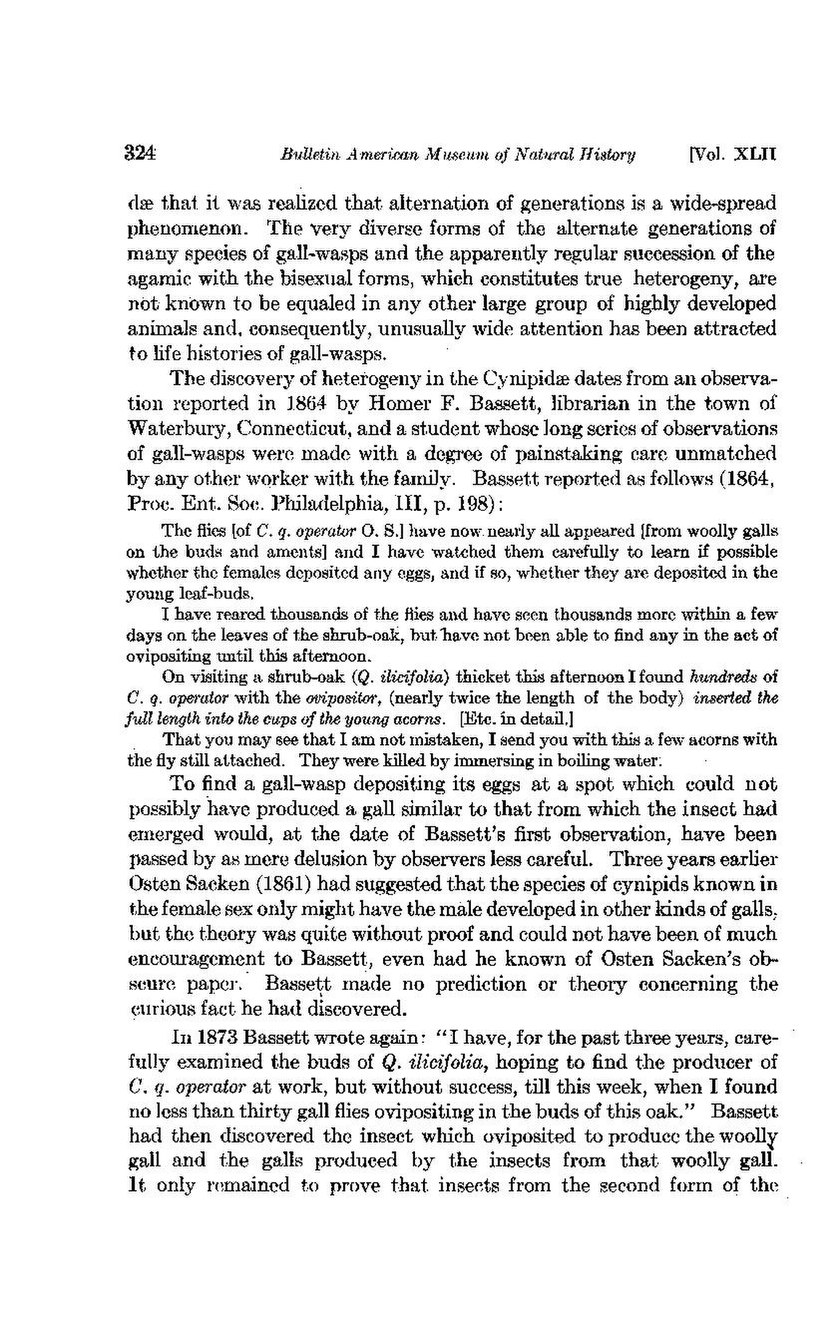dæ that it was realized that alternation of generations is a wide-spread phenomenon. The very diverse forms of the alternate generations of many species of gall-wasps and the apparently regular succession of the agamic with the bisexual forms, which constitutes true heterogeny, are not known to be equaled in any other large group of highly developed animals and, consequently, unusually wide attention has been attracted to life histories of gall-wasps.
The discovery of heterogeny in the Cynipidæ dates from an observation reported in 1864 by Homer F. Bassett, librarian in the town of Waterbury, Connecticut, and a student whose long series of observations of gall-wasps were made with a degree of painstaking care unmatched by any other worker with the family. Bassett reported as follows (1864, Proc. Ent. Soc. Philadelphia, III, p. 198):
I have reared thousands of the flies and have seen thousands more within a few days on the leaves of the shrub-oak, but have not been able to find any in the act of ovipositing until this afternoon.
On visiting a shrub-oak (Q. ilicifolia) thicket this afternoon I found hundreds of C. q. operator with the ovipositor, (nearly twice the length of the body) inserted the full length into the cups of the young acorns. [Etc. in detail.]
That you may see that I am not mistaken, I send you with this a few acorns with the fly still attached. They were killed by immersing in boiling water.To find a gall-wasp depositing its eggs at a spot which could not possibly have produced a gall similar to that from which the insect had emerged would, at the date of Bassett's first observation, have been passed by as mere delusion by observers less careful. Three years earlier Osten Sacken (1861) had suggested that the species of cynipids known in the female sex only might have the male developed in other kinds of galls, but the theory was quite without proof and could not have been of much encouragement to Bassett, even had he known of Osten Sacken's obscure paper. Bassett made no prediction or theory concerning the curious fact he had discovered.
In 1873 Bassett wrote again: "I have, for the past three years, carefully examined the buds of Q. ilicifolia, hoping to find the producer of C. q. operator at work, but without success, till this week, when I found no less than thirty gall flies ovipositing in the buds of this oak." Bassett had then discovered the insect which oviposited to produce the woolly gall and the galls produced by the insects from that woolly gall. It only remained to prove that insects from the second form of the
